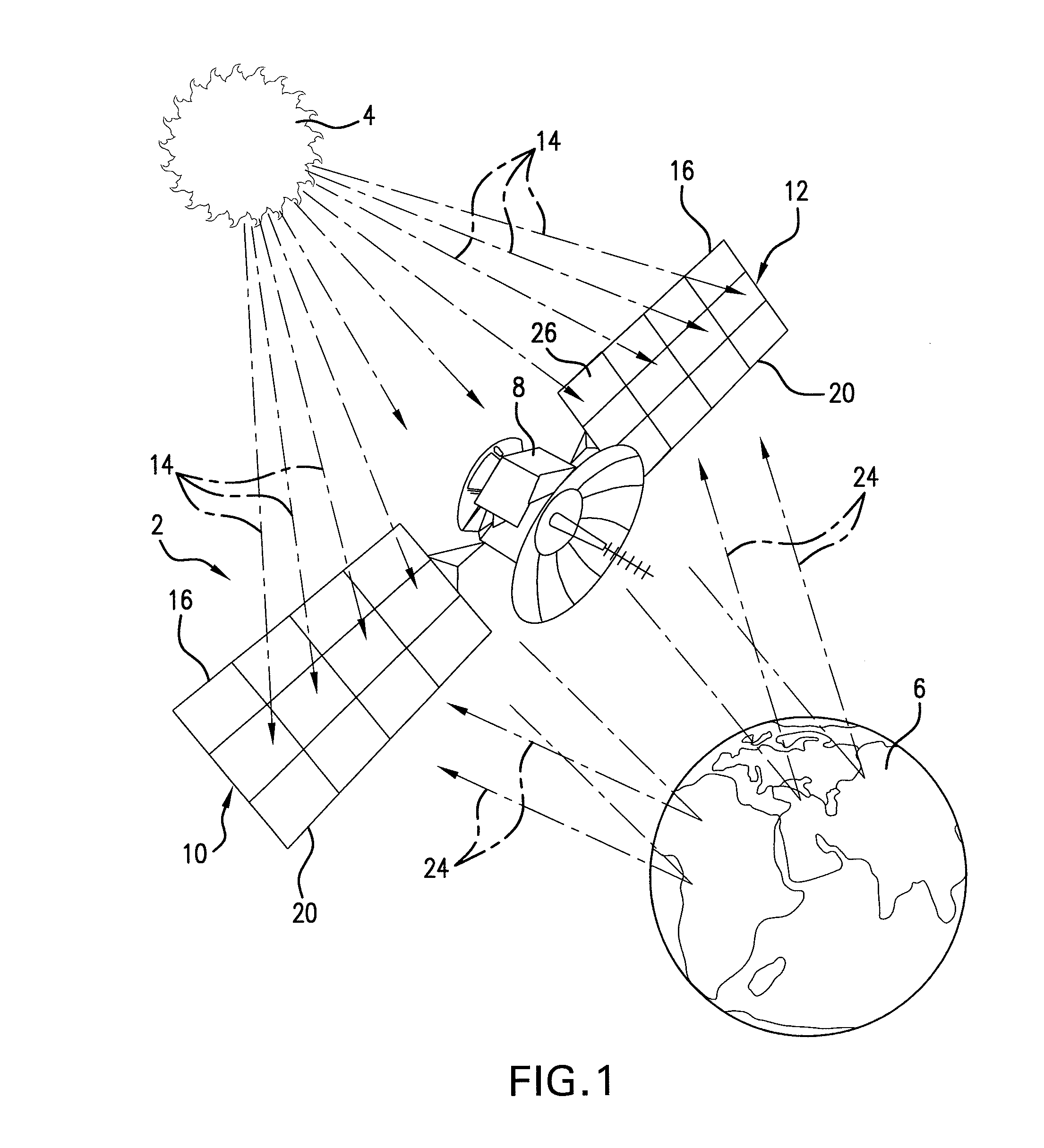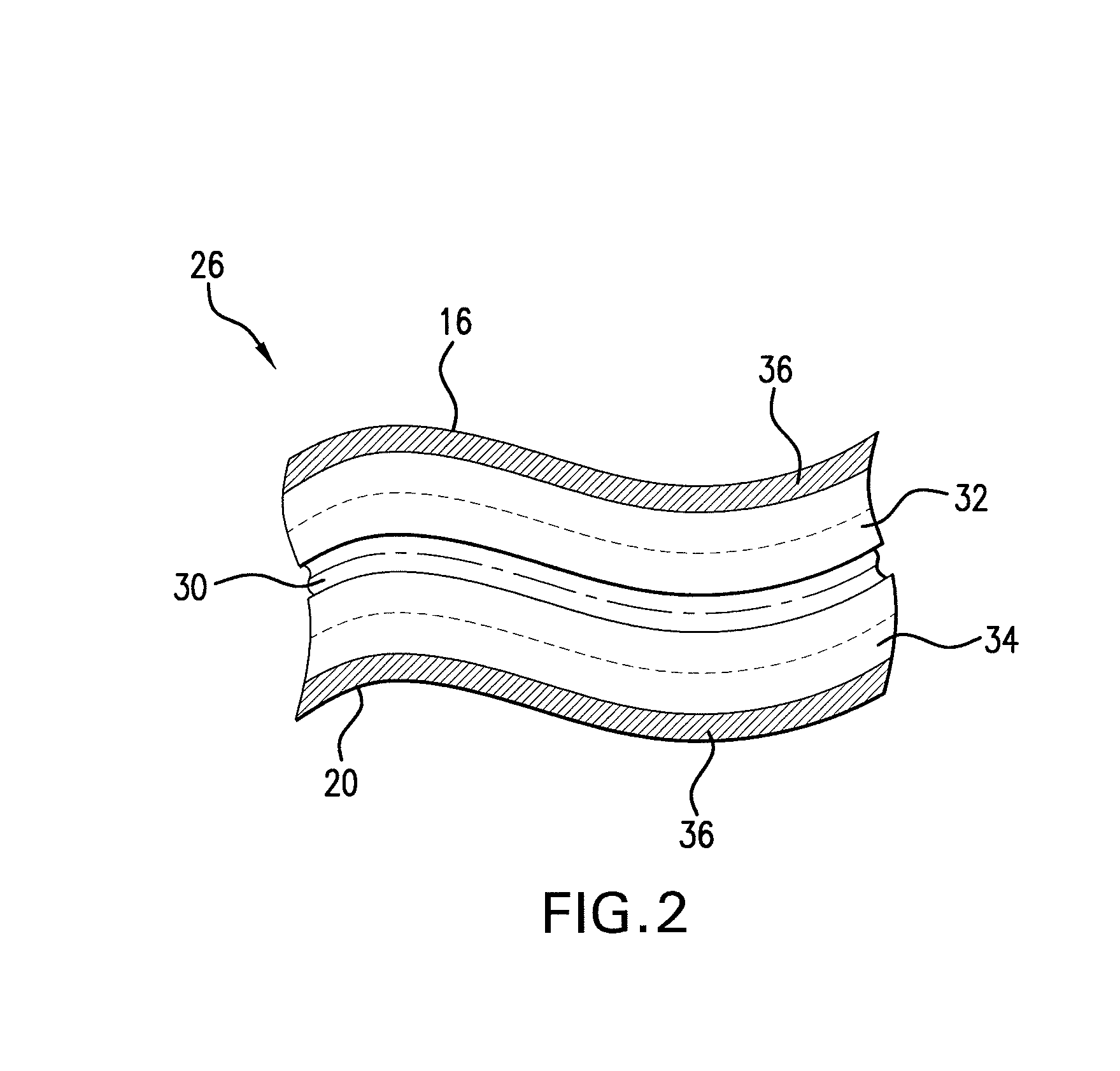Dual Sided Photovoltaic Package
a photovoltaic package and double-sided technology, applied in the field of solar power generation, can solve the problems of double-sided cells having a low power density, large mass, and impact with other components, and achieve the effects of optimizing power generation, flexible structure, and optimizing weigh
- Summary
- Abstract
- Description
- Claims
- Application Information
AI Technical Summary
Benefits of technology
Problems solved by technology
Method used
Image
Examples
Embodiment Construction
[0029]A preferred embodiment of the invention will now be described in detail with reference to the accompanying drawings, wherein like reference numerals relate to like components.
[0030]FIG. 1 depicts a typical environment in which an embodiment of the present invention is intended to operate. A satellite 2 is located in-between the Sun 4 and the Earth 6. The satellite 2 comprises a control unit 8 and two photovoltaic arrays 10 and 12. The control unit 8 is responsible for controlling the functionality of the satellite 2 and, although it is required for the satellite to operate, it does not form part of the present invention and, therefore, the control unit 8 will not be discussed in detail.
[0031]The satellite 2 is positioned and arranged so that direct solar radiation 14 from the Sun 4 is incident on a top surface 16 of photovoltaic arrays 10 and 12. Furthermore, a bottom surface 20 of photovoltaic arrays 10 and 12 have incident upon them indirect solar radiation 24 from the Sun 4...
PUM
 Login to View More
Login to View More Abstract
Description
Claims
Application Information
 Login to View More
Login to View More - R&D
- Intellectual Property
- Life Sciences
- Materials
- Tech Scout
- Unparalleled Data Quality
- Higher Quality Content
- 60% Fewer Hallucinations
Browse by: Latest US Patents, China's latest patents, Technical Efficacy Thesaurus, Application Domain, Technology Topic, Popular Technical Reports.
© 2025 PatSnap. All rights reserved.Legal|Privacy policy|Modern Slavery Act Transparency Statement|Sitemap|About US| Contact US: help@patsnap.com



